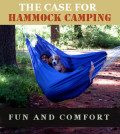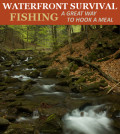Desert Escape? Your 72-Hour Survival Kit Essentials To Beat Desert Cold!
If you’ve kept up the news in this year of 2014, it’s no secret –this winter has been a rough one. With travel agents saying that their clients have been “desperate” to get out of the cold, what better place shake off the snow than in a 78-degree, sunny, dry desert climate with a Bud in a koozie, reclining next to a sparkling lake in New Mexico?
However, travel plans don’t always happen how we think they will –and when there are thousands of miles between you and your native land, it’s not always easy to know how to prepare for catastrophic eventualities. If you’re driving through the desert and your rental car decides to snap a serpentine belt, hopefully you were on a regularly traveled highway. If not, then things might get interesting.
Though it may not seem like it –surviving a desert climate is very doable. Generations have been doing so for thousands of years. There are advantages and disadvantages to being subject to such an arid climate, but it is best to research, study, and prepare against the desert’s most likely killers.
Source: Flickr http://www.flickr.com/photos/akban/5439007565/sizes/m/
There are many survival methods that you can employ, while staying amongst the tumbleweeds –but here are a few of the most important ones:
- First, DO NOT wander from your vehicle or the very spot where you originally got lost, unless that spot is, or has become, dangerous. The worst thing that lost persons can do is to wander, because they are wandering away from one of the first places that search and rescue operators will be looking. The farther you go, the wider radius the search area will have to be.
- Second, DO NOT exert more energy or take unnecessary risks than is prudently required in that moment. All too often, ‘survival programs’ on TV will show some former special forces dude running willy-nilly over the countryside, but this is a bad idea, and a fast way to get injured, dehydrated, exhausted, and even more lost than before.
- Third, DO NOT underestimate the killing-power of mother nature, especially in a location, climate, and ecosystem that is foreign to you. When in doubt, it’s usually best to stay put and conserve your energy. Slow, cautious, and thoughtfully planned movements keep the mind and body from unnecessary stress.
With a little patience, planning, and preparedness, you can make your way out of just about anything.
H2O
It’s why just about everything in the desert has adapted into having prickly, thorn-ridden, venomous, lightning fast, and downright mean capabilities. The presence of water means that organic resources are abundant and life is commonplace. The absence of water means that only sand and rocks can thrive with ease –forcing anything living there to become brutishly honed for the purpose survival and continuation of its species.
What does this mean for you? In Vermont, Oregon, and Georgia, water is fairly abundant –so carrying quarts of it isn’t necessarily a high survival priority, provided you came outfitted with the proper containers. But in Arizona, western Texas, and a day’s drive east of LA, you must, must, must carry water.
In addition, you also need the means by which to take advantage of water sources around you, because these little opportunities do exist in arid zones. To pack your 72-hour kit properly, here are a few items of hydration gear you should bring along:
- Filter straw – There are water sources out there, but in those water sources are all matter of terrible organisms or hard metals that will do a number on your body. Be smart and filter them out!
- Stainless steel water bottles – Why stainless steel? If your filter straw is lost or damaged, you can still avoid ingesting cryptosporidia by boiling your water first.
- Hydration bladder – Simply put, you just cannot carry enough water with you. A hydration bladder is one of the best ways to carry and store a fairly hefty amount of water, because H2O is heavy.
The general rule of thumb is to drink at least 1 quart per day in a survival scenario; however, if you are exerting yourself, then you will need more.
Covering Your Head (And Your Behind)
The desert is known for its oppressively hot days and curiously chilly nights. The reason for these ridiculous temperature swings, again, has to do with the climate’s lack of moisture and humidity.
Staying out of the sun is important for conserving your water and keeping cool during the day. Also, being able to reflect your body heat back to you is also important for keeping warm at night.
In addition, you need a way to keep the sun from bearing down on your scalp, which causes heat stroke and a nasty sunburn.
- High-SPF sunscreen – The higher it is, the better. This is not the time to work on that farmer’s tan.
- Shemagh – These have been proven to be excellent head coverings that will keep your scalp cool and the sand out of your face.
- Sunglasses – The desert sun will do a number on your eyes, so keep the UV from burrowing a hole into your retinas.
- Space blanket tarp – These are in my top-3 survival items, for the simple fact that they have so many critical uses.
- With the shiny side up, they reflect the sunlight away from you, while providing shade during the day.
- With the shiny side down, they reflect your own body heat back to you, during those iconic 30-degree desert nights.
- With the shiny side up, they can be used for signaling search and rescue. (More on this is just a bit.)
- Large survival-style knife – You need a way to hack and cut up fuel for a fire at night. Doing this with your bare hands could become a downright painful, albeit bloody ordeal. In addition, having a 6 to 8-inch survival knife can even be used against something that wants to have you as a snack –because, trust me folks, those kinds of mammals are out there. Gerber offer great variety, but if you are low on budget mtech blades are fine. If you don’t have the benefit of a firearm, then you might want to keep that blade close by.
- Fire kit – You need a way to make the fire.
- Work gloves – Because nearly everything out there has thorns.
Making You Easier To Find
It’s hard to find a lost person. But, if that lost person used reflective surfaces, bright orange clothing and tarps, lots of smoke, an air horn, and even a flare gun in the dead of night… then that person would be a lot easier to find.
Essentially, if you stay put, and do everything in your power to cause a visual and auditory ruckus –then your chances of being rescued increase exponentially. Here are excellent signaling items to pack:
- Space blanket tarp – Told you we’d come back to this. Not only is one side of these tarps blindingly bright and reflective against the desert sun, but if the other side is bright orange –then you’re still going to glow against the sand.
- Blaze orange t-shirt & bandana – Indeed, a bandana can be used as a water filtration device, but it can also be used as a head covering during the morning hours. Essentially, these two items of clothing only do more to make you stand out to SR teams.
- Air horn – It’s the rule of 3’s. Three blasts from an air horn, rifle, pistol or even whistle means that you’re saying, “HELP!” In the desert, the sound carries quite far, especially with the wind.
- Flare gun – Deserts are often flat, allowing you to see for 10-20 miles in every direction. Why not carry a flare gun with ammo that can be seen even farther than that. One shot in the dead of night, should hopefully wake the neighbors (and even scare off unfriendly critters).
- Hi-lumen torch w/ SOS setting – Being able to position your flashlight at night to signal “S.O.S” is a no-brainer. Just position it towards the most likely direction from which rescue will come, and catch some Z’s.
Being an outdoor enthusiast, believes that surviving a 72-hour desert scenario is difficult, but it can most certainly be done. If you take care to emphasize your shelter, and are adequately equipped with knives, fire starter, and water purifier then you might even be picked up in time for a few more days of pontoon boat lounging on a desert lake –with one heck of a story to tell when you return.



